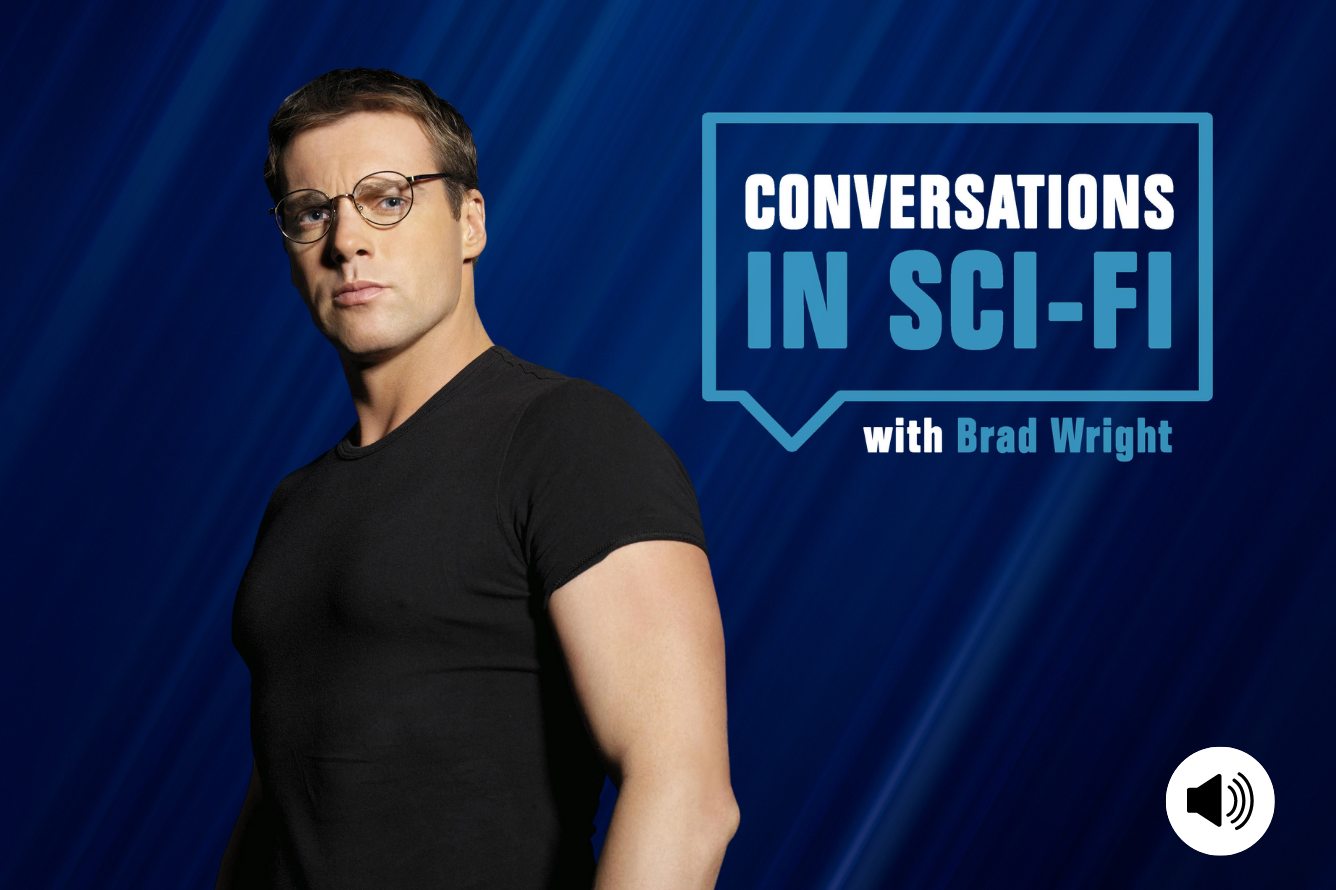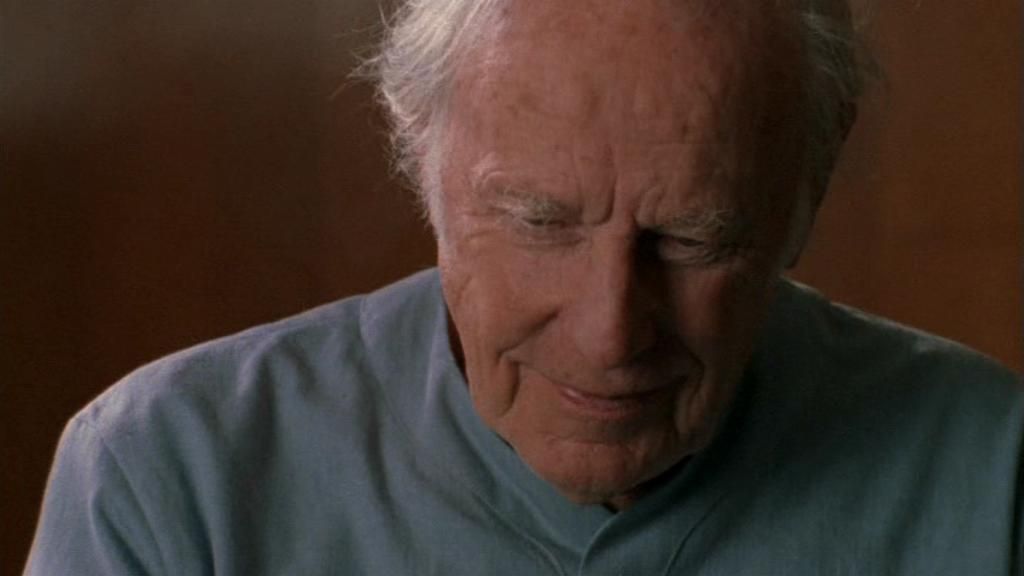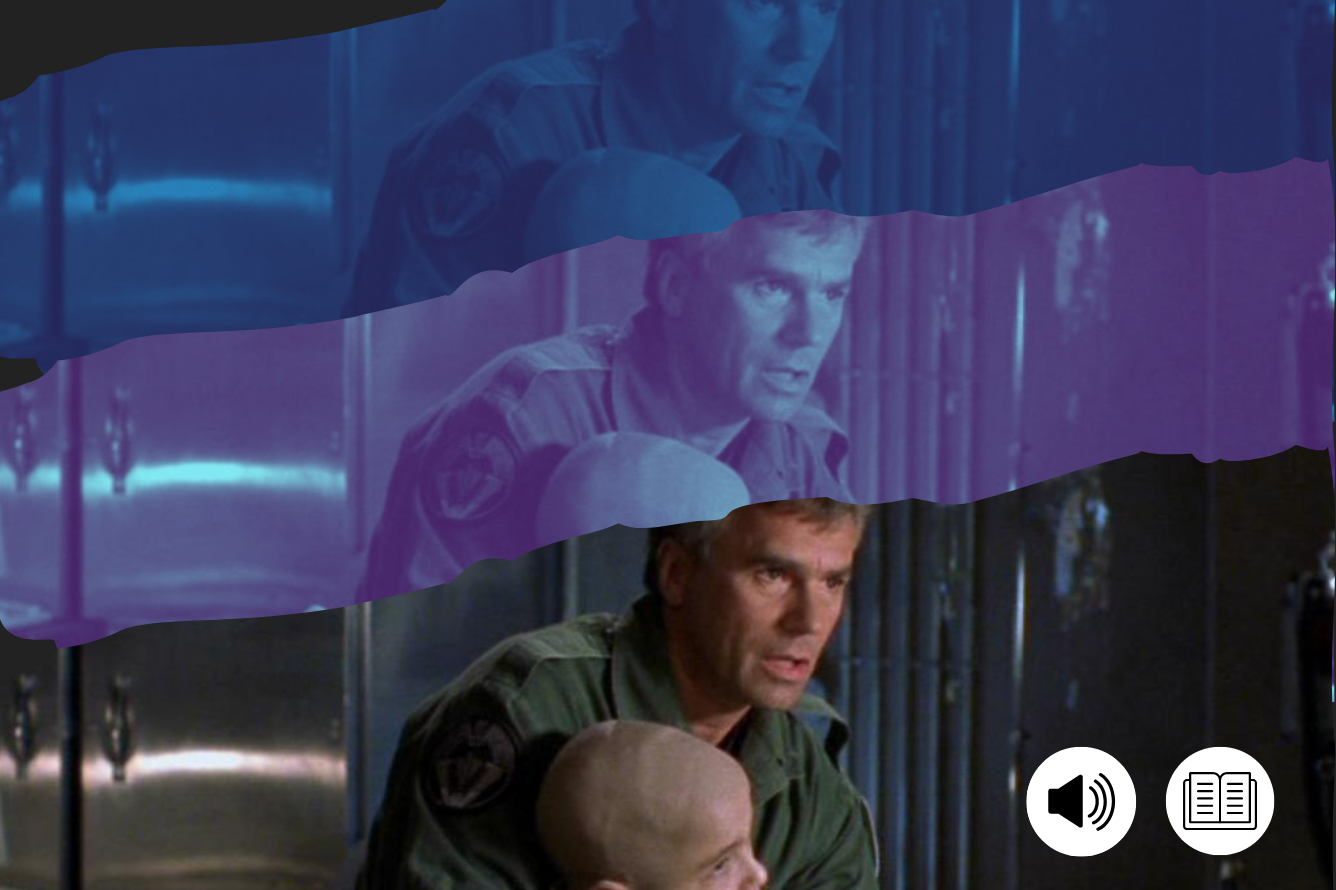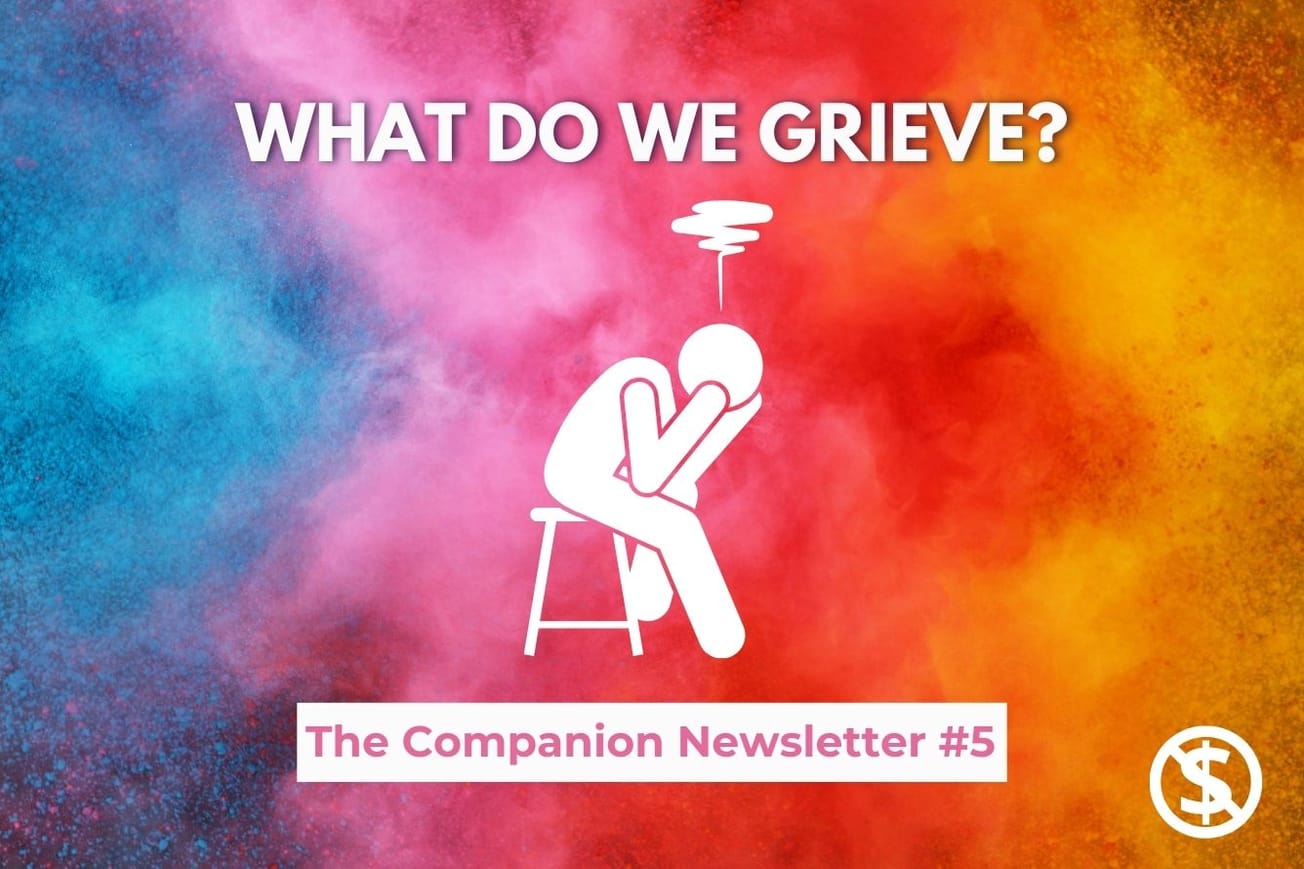I am often surprised at the vastly different meanings and frames of reference that individuals can bring to the exact same story. For me, the early seasons of Stargate SG-1 were a welcome escape from a less-than-optimal daily reality and Friday nights became a beacon of respite. By the time the series’ third season aired on a local TV station in 2001, the pain of my grandfather’s passing after losing his battle with Alzheimer’s disease some months earlier, was still intense and raw. Two specific episodes in Season 3 – ‘Learning Curve’ (S3, Ep5) and ‘Crystal Skull’ (S3, Ep21) – hit a bit close to home.
There are few illnesses that are looked upon with such dread and fear as Alzheimer’s disease. Rather than only causing ‘simple’ memory loss (if there can be such a thing), according to Hopkins Medicine, Stages of Alzheimer’s, Alzheimer’s is a neurodegenerative disease that can lead to hallucinations, paranoia, or delusions in its severe, late stage. The sufferer also loses physical abilities, forgets the names of people or people themselves – even spouses and children, and is unaware of their surroundings or recent events.
Witnessing the disease claim my grandfather bit by bit as our family experienced the stigma attached to it, I couldn’t help but see it as an enemy that could not be defeated by current medicine and science. I didn’t really care about the history of Alzheimer’s disease or the man whose name was given to it. All I knew was that his name had become worse than any curse word.

The Denigration of Dr. Nicholas Ballard
‘Crystal Skull’ begins with SG-1 encountering the titular Crystal Skull in a Maya pyramid, an object that Dr. Daniel Jackson (Michael Shanks) immediately recognizes as being similar to the one that his grandfather Dr. Nicholas Ballard (the late Jan Rubeš) discovered in 1971 in Belize. Ballard claimed to have been transported to another planet and was widely discredited – much as Daniel himself was when we encountered him espousing his wild theories at the beginning of the 1994 movie.

As you can imagine, seeing the elderly Nick Ballard sitting seemingly defeated in front of the doctor with a bowed head triggered some memories of my own grandfather. However, it was not so much him as a person that sent me reeling, as the reactions that many had towards him.
Some of the kids in my class had a field day on the subject at hand (and, no, I don’t believe in the lazy “kids will just be kids” excuse). They kept asking whether he’d taken his “crazy pills”, laughing at the memory loss and confusion. To them, “crazy” and “dementia” went hand-in-hand and they understood very little of either. Neither did they want to understand.
Following in his grandfather’s footsteps, Daniel is struck by strange energy from the Crystal Skull and seemingly whisked away. Instead, he recovers only to find himself incorporeal and unable to be seen or heard by his colleagues. With no other leads, Major Sam Carter (Amanda Tapping) suggests that they ask his grandfather about what happened to him in Belize – only to find out from the team’s medic, Dr. Janet Fraser (Teryl Rothery), that he’s checked himself into a psychiatric institution:
Sam: I can’t believe I’m going to suggest this, but Daniel’s grandfather –
Jack and Daniel: Nick?
Sam: Well, he claimed that the skull teleported him somewhere. He may be the only person who actually knows where Daniel is.
Janet: I’m not so sure, Major. I’ve already taken the liberty of looking him up.
Daniel: Oh, you didn’t.
Janet: His current address is a psychiatric institution in Oregon.
Jack: Psychiatric?
Janet: Apparently his failure to prove the crystal skull is more than just a curiosity caused a severe mental breakdown from which he’s never been able to fully recover. Nick checked himself in.
The team, especially Colonel Jack O’Neill (Richard Dean Anderson), does show some reservations when they find out that Nick is in a psychiatric institution. While waiting to see Nick, they are all also noticeably uncomfortable inside the hospital. One can imagine that after ‘Legacy’ (S3, Ep4) and seeing Daniel gripped by apparent schizophrenia, they really have no idea what to expect when they see Nick.
The stress of the rejection of what Nick had truly experienced, took much out of him and much of his life from him. When he hears about the second skull – not to mention when he finds out about the Stargate and goes to see the planet and its aliens once more – Nick gets a new lease on life.

It’s not so much that he’s been proven right in his study of the crystal skull and had therefore been vindicated, but he could, perhaps, also admit that he most likely wasn’t mentally ill. The knowledge and memories of the aliens that he’d suppressed through the years under the guidance of the psychiatrists and other personnel at the institute could be released… He could once more be himself and express himself fully without worrying about being called ‘insane’– or worse.
The farewell between Daniel and Nick, although sad, leaves us feeling heartened as we see Nick coming back from the brink of despair as well as Nick and Daniel finding that they now have an even better relationship than before. When we first meet Nick, he says the following about his grandson:
He was more insane than I was – I told him so. I told him to forget all that nonsense.
However, right at the end of the episode, Daniel calls Nick ‘grandpa’, showing that their relationship has not only grown into respect at a scholarly level but also how their familial relationship has grown.
An earlier episode in Season 3, ‘Learning Curve’ (S3, Ep5), hit me even harder.
The Averium and Merrin’s Loss of Self
In ‘Learning Curve’, the SG-1 team comes across Orban, a world where some of the children seem to be “only” apprentices, albeit extremely intelligent. However, the team soon learns that the children have been injected with nanites at birth and that their brains are basically taken over by these minute machines. In fact, the nanites have replaced many of the synapses in their brains.
However, when the children are about 12 or 13 years old, they undergo the “averium” – a ritual during which the nanites are removed and one nanite, containing all the knowledge the child had, is given to every Orbanian. This procedure, however, leaves the child in an almost infantile state, bereft of all their knowledge and seemingly also themselves. Let’s just call it one of my “ugly crying” Stargate episodes as the ending is so bittersweet.
It is this averium and the loss of self by an outside force – here in the form of the adults doing the averium ritual – that really struck me. Although this averium is seen by the children (all of them, as far as one could tell) as a great honor, the loss of self that the team sees happening and is appalled at, is one that there is some kind of control over. For example, Merrin (Brittney Irvin) could have decided to stay on Earth and not undergo the averium. She could, after all, not have known if her people would actually start to treat the Urrone children who had already undergone the averium with compassion and teach them skills once more.

With Alzheimer’s, on the other hand, one has no control at all. Instead of the memories all being taken away at once, the memories rather decay and vanish at a slow pace until one “forgets” everything, even something as simple as swallowing. Jack, who has a well-tuned moral compass when it comes to children, puts it bluntest:
She’s going back to get her brain sucked out. And I dare anybody to phrase it more delicately.
This is perhaps one of the things most troubling to me about the children that have gone through the averium – how much of themselves do they still remember? Are their personalities just erased along with the knowledge that has been taken away from them?

Coming back to my grandfather, it is also this seeming loss of self that haunted me. Do sufferers truly lose themselves to this disease, or are their true selves simply hidden somewhere inside, somewhere away from the ravages of the disease? Rather than being an empty vessel that will never be filled again, are they not rather more like a cabinet of curiosities of which the most important drawer is locked from the inside?
Nanotech and Finding Hope
Yet, there does seem to be some hope in the future of ways to heal (albeit partially) the degeneration of neural tissues – and we find it in nanotech, the same technology that underpins ‘Learning Curve’.
In the paper ‘Integration of Nanobots Into Neural Circuits as a Future Therapy for Treating Neurodegenerative Disorders‘ in Frontiers of Neuroscience (21 March 2018), Saniotis et al, notes that “[U]sing the Nanotechnology for helping patients with neurodegenerative disorders is a natural step forward in the world of nanotechnology”, citing Parkinson’s and Alzheimer’s specifically.
In this paper, it’s suggested that a type of “endomycorrhizal-like interface” could be used to link multiple neurons together using a nanobot mesh consisting of a central chamber and filaments that stretch, web-like, between different neurons and the chamber. Because a number of neurons will be connected, it may compensate for “neural loss in some neurodegenerative disorders, such as Alzheimer’s disease and Parkinson’s disease.”
This may still be decades away, but it gives us some hope that there’ll come a point when nobody else will be forced to see a loved one drift away.
My Own Learning Curve
During the time that my grandfather battled Alzheimer’s disease, the slow erosion of his memory and self left me bitter, but it also taught me how to show empathy and show it more readily. You see, the disease – this merciless outside force – had me bitter (and, to be completely honest, still leaves a bitter taste in my mouth), but not at the person who was slowly forgetting who I and everyone he loved was, but at the disease that mocked those surrounding my grandfather and knowing that there was nothing we were able to do.
The empathy, however, I could more easily show towards the person – and then any person – who was suffering. For someone with dementia, for example, I no longer held some kind of prejudicial fear. They were not just somebody to be pitied from afar but were rather someone to show compassion to.

Jack O’Neill in ‘Learning Curve’ first meets Merrin more on his own terms than hers, like when he takes her from the base to show her what childhood can and should be like. To show her some other way of living than that which she had been chosen for. However, when he meets Merrin after the averium and she doesn’t even seem to recognize him, O’Neill meets her on her terms. He meets her where she is, not where he wants her to be.
O’Neill sitting down at the end of the episode to draw on the wall with Merrin is, for me, one of the most tender scenes in all ten seasons of Stargate SG-1. It’s an example of how we should not only act towards those who have dementia or Alzheimer’s but that it’s how we should act towards anyone in life – to meet them where they are now, not where you want them to be.
This article was first published on February 1st, 2022, on the original Companion website.
The cost of your membership has allowed us to mentor new writers and allowed us to reflect the diversity of voices within fandom. None of this is possible without you. Thank you. 🙂











